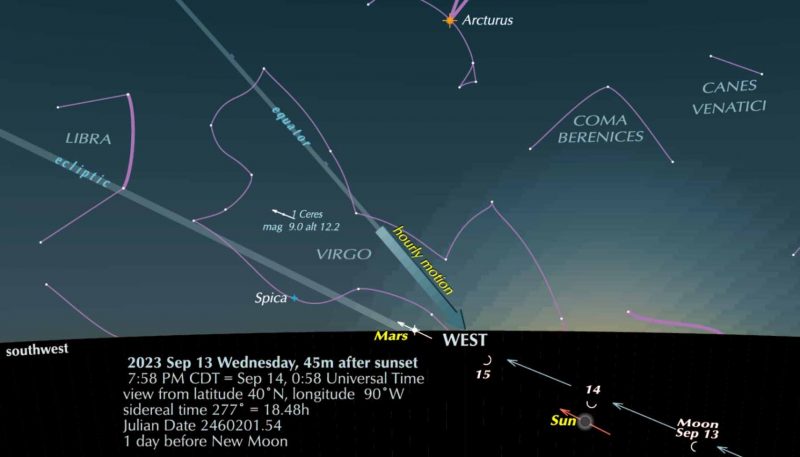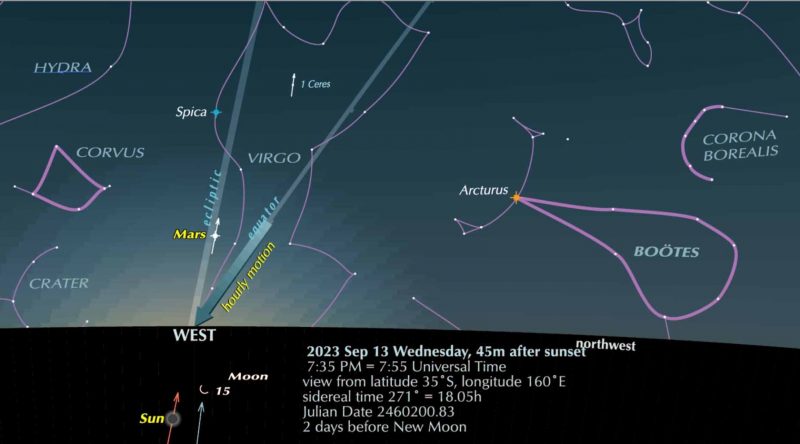
EarthSky joins the many fans of beloved UK astronomer Guy Ottewell in wishing him a speedy recovery from a recent heart surgery. We were thrilled to see this post at Guy’s blog on September 13, 2023. Reprinted here with permission. Edits by EarthSky. Live long and prosper, Guy!
Finding patterns in stars
It’s human nature to see patterns in things, and definitely among the stars. Can you find a cosmic smile, an east-west line of at least four stars, the end ones tilted to the north? EarthSky’s John Jardine Goss found this one: A smiling cyclops asterism. If you find one, link to it in the comments below.
The western evening sky this week
The top chart shows the current evening sky. Not much is happening to the left (east) of the sun. Mars is on the horizon but is faint right now and lost in the evening twilight. Ceres, largest of the dwarf planets, is far below the visibility needed for the unaided eye. Arrows through the solar system objects and the sun show how they move, in relation to the starry background, over five days. The moon is below the horizon, and it is shown on five different dates. You can see how it will later emerge in the evening twilight as a slender crescent.
Most other features shown are either abstract – such as the celestial equator, and the antapex of Earth’s motion or the opposite direction we are flying – or too low to see in the bright twilight. But the broad arrow showing how far the sky rotates in one hour suggests how it will darken as the sun goes lower, and the stars pop in to view.
The view from the Southern Hemisphere

Let’s see how different it is if you are in Australia or New Zealand:
The lines in the sky – the celestial equator and the ecliptic – cut the evening horizon at a different angle, because you are on a southerly part of the globe. They lean over to the right instead of the left. And Mars, being on a part of the ecliptic south of the equator, has been swung by this change of angle to a position 10 degrees vertically above the western point on the horizon. Also, Ceres is higher in the sky.
Bottom line: Guy Ottewell explores and explains the different view of the current objects near the western horizon from the Northern and Southern Hemispheres.
Read more from Guy Ottewell: Is there a smile across the sky?
The online version of Guy Ottewell’s 2024 Astronomical Calendar is already available; the printed version will be available in a few days.











